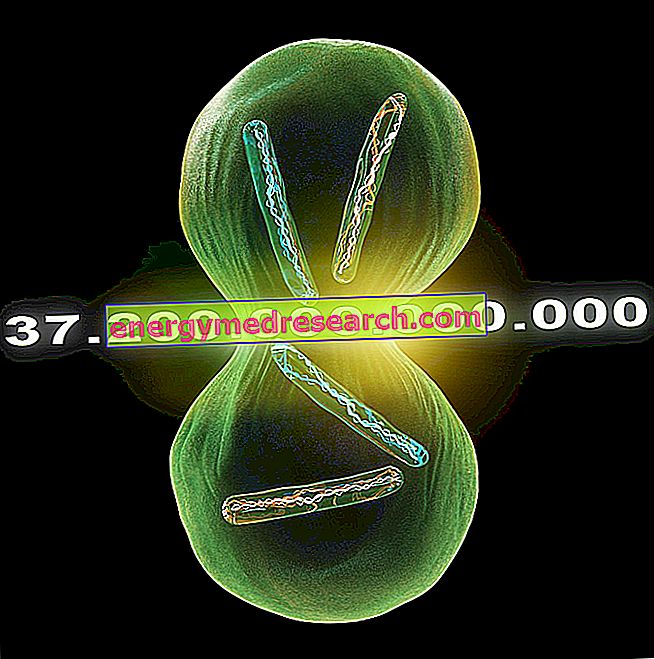Generality
Immunoglobulins (Ig) are particular proteins involved in the immune response.
Also called antibodies, immunoglobulins have the function of binding substances that are potentially harmful to the organism ( antigens ), contributing to their neutralization.

There are five classes of immunoglobulins: A, D, E, G and M. Each of these is implicated in specific immune reactions. Therefore, their evaluation at plasma level allows to determine and / or monitor an excess or deficiency of one or more classes of immunoglobulins.
Immunoglobulin tests are particularly useful in the diagnosis of allergies or certain types of neoplastic processes, to ascertain the presence of any infections and highlight the presence of particular auto-antibodies involved in an autoimmune disease.
What are
Immunoglobulins are globular proteins with antibody activity, very important for the proper functioning of our immune system .
They consist of four polypeptide subunits (two heavy chains and two light chains), linked together by a disulfide bond. The heavy chains are of five main types, corresponding to the same number of classes of Ig (A, D, E, G and M), some of which (A and G) can be subdivided into subclasses.
Immunoglobulins are produced by B lymphocytes in response to an external and / or internal antigenic stimulus . In practice, they behave in a similar way to sentinels, ready to alert activated lymphocytes (plasma cells) to produce a very high number of antibodies (up to 2, 000 per second), once they come into contact with the aggressor.
Within the immune system, immunoglobulins are the main component of humoral immunity, therefore they have the function of neutralizing foreign substances, recognizing each antigenic determinant as a target, and making them easily identifiable by phagocytes and cytotoxic cells.
Characteristics and functions of immunoglobulin classes
Antibody class | Features | Functions |
IgA |
|
|
IgM |
|
|
IgG |
|
|
IgE |
|
|
IgD |
|
|
Why do you measure
Examination of serum immunoglobulins is used to highlight and monitor an excess or deficiency of one or more antibody classes.
This evaluation provides important information about the functionality of the patient's immune system, especially when it is necessary to confirm or rule out the presence of an inflammatory or infectious process.
When is the exam prescribed?
The exam is able to give important indications on the type of pathology from which one is affected, especially if this affects the concentration of one or more classes of Ig.
Your doctor may prescribe immunoglobulin analysis when you suspect the presence of:
- Infection;
- Inflammatory processes;
- Autoimmune disorders;
- Allergies;
- Hematological diseases;
- Liver injury.
What other parameters can be useful for diagnosis?
Immunoglobulins may be altered in a wide range of diseases, infectious and non-infectious. If anomalies are found during their evaluation, the doctor may consider it appropriate to investigate the matter with other control tests, in order to formulate a much more precise diagnosis and indicate the most suitable therapy.
Among the parameters that are often evaluated together with immunoglobulins, we have the following:
- ESR : consists of assessing the sedimentation rate of red blood cells. Also the ESR is an excellent parameter to check for infections. In fact, as for immunoglobulins, an increase in ESR corresponds to a certain probability of ongoing infection;
- Albumin : is the protein most present in blood serum. It is produced by the liver and a lowering of its values, in parallel with an increase in antibody titers, can lead us to think about the presence of liver damage and leukemia;
- Transaminases and Gamma GT : also in this case, an increase of the two parameters together with the increase of immunoglobulins, would indicate the presence of pathologies that go to damage the conditions of the liver, pathologies that can be acute or chronic.
Normal values
As for the total concentration of immunoglobulins (IgG + IgM + IgA), it is believed that values between 600 and 2300 mg / dl are normal.
IMMUNOGOBULINE - REFERENCE VALUES | |
IgA | 90-400 mg / dl |
IgG | 800-1800 mg / dl |
IgM | 60-280 mg / dl |
IgD | 0.3-0.4 mg / dl |
IgE | 0-180 IU / ml; 20-440 mg / dl |
Note : the reference interval of the exam can change according to age, sex and instrumentation used in the analysis laboratory. For this reason, it is preferable to consult the ranges listed directly on the report. It should also be remembered that the results of the analyzes must be evaluated as a whole by the general practitioner, who knows the patient's medical history.
Immunoglobulin High - Causes
Immunoglobulins G (IgG)
Causes of higher than normal values may include:
- Liver disease from toxicity, autoimmunity or infectious (including hepatitis and cirrhosis);
- Chronic inflammatory states;
- Chronic infections;
- Proliferative diseases (such as myeloid leukemia and Hodgkin's disease);
- Multiple myeloma.
Immunoglobulin A (IgA)
An increase in IgA can be observed in the event of:
- Chronic hepatopathies;
- Rheumatoid arthritis;
- Systemic lupus erythematosus;
- Sarcoidosis;
- Chronic infections (eg tuberculosis);
- collagen;
- Multiple myeloma.
Immunoglobulins M (IgM)
An increase in IgG can be observed in the event of:
- Biliary cirrhosis;
- Acute and chronic hepatopathies (infectious, autoimmune, toxic, etc.);
- Infectious diseases;
- Collagen disorders;
- Sarcoidosis;
- Rheumatoid arthritis;
- Waldenstrom disease;
- Systemic lupus erythematosus.
Immunoglobulin E (IgE)
IgE is increased in allergies, especially in pollinosis. Furthermore, the increase may contribute to the diagnosis of atopy in the newborn.
Immunoglobulin D (IgD)
- Collagen disorders;
- Chronic infections;
- Liver disease.
Low immunoglobulins - Causes
Immunoglobulins G (IgG)
IgG values lower than normal may depend on:
- Chronic lymphatic leukemia;
- Congenital and acquired immunodeficiencies;
- Reticulosarcoma;
- Burns;
- Nephrotic syndrome;
- Protein-dispersing enteropathies.
Immunoglobulin A (IgA)
IgA reduction may be related to:
- Chronic lymphatic leukemia;
- Reticulosarcoma;
- Burns;
- Selective IgA deficiency;
- Recurrent intestinal infections;
- Celiac disease;
- Selective and transient hypogammaglobulinemia.
Immunoglobulins M (IgM)
Causes of values lower than normal:
- Chronic lymphatic leukemia;
- Reticulosarcoma;
- Selective and transient hypogammaglobulinemia.
How to measure it
Since they are detectable proteins in the blood stream, the concentration of immunoglobulins can be assessed by taking a blood sample from a vein in the arm.
Preparation
Before examining the immunoglobulins, it is necessary to observe a fast of at least 8 hours, during which a modest amount of water can be taken.
Interpretation of Results
Various pathologies can determine an increase (hypergammaglobulinemia) or a decrease (hypogammaglobulinemia) in the production of antibodies. Some may widely affect the various classes (polyclonal gammopathy), while others involve only one (monoclonal gammopathy).
The most frequent causes of high immunoglobulin concentrations include:
- Acute and chronic infections;
- Autoimmune disorders (rheumatoid arthritis, systemic lupus erythematosus, scleroderma);
- Cirrhosis;
- Inflammatory disorders;
- Hyper-immunization reactions;
- In newborns, infections in pregnancy (syphilis, toxoplasmosis, rubella and CMV);
- Multiple myeloma;
- Chronic lymphatic leukemia (LLC);
- lymphoma;
- Waldestrom's macroglobulinemia (IgM).
A reduction in immunoglobulin values may be observed, however, in the case of:
- Kidney failure;
- Drugs, such as phenytoin, carbamazepine and immunosuppressants;
- Nephrotic syndrome, renal pathology associated with protein loss in urine;
- Burns;
- Enteropathy with protein loss.
In any case, the quantitative immunoglobulin test is not diagnostic, but may be a good indicator of pathology. Abnormal results indicate that something affects the immune system and suggests the need to undergo further tests.



